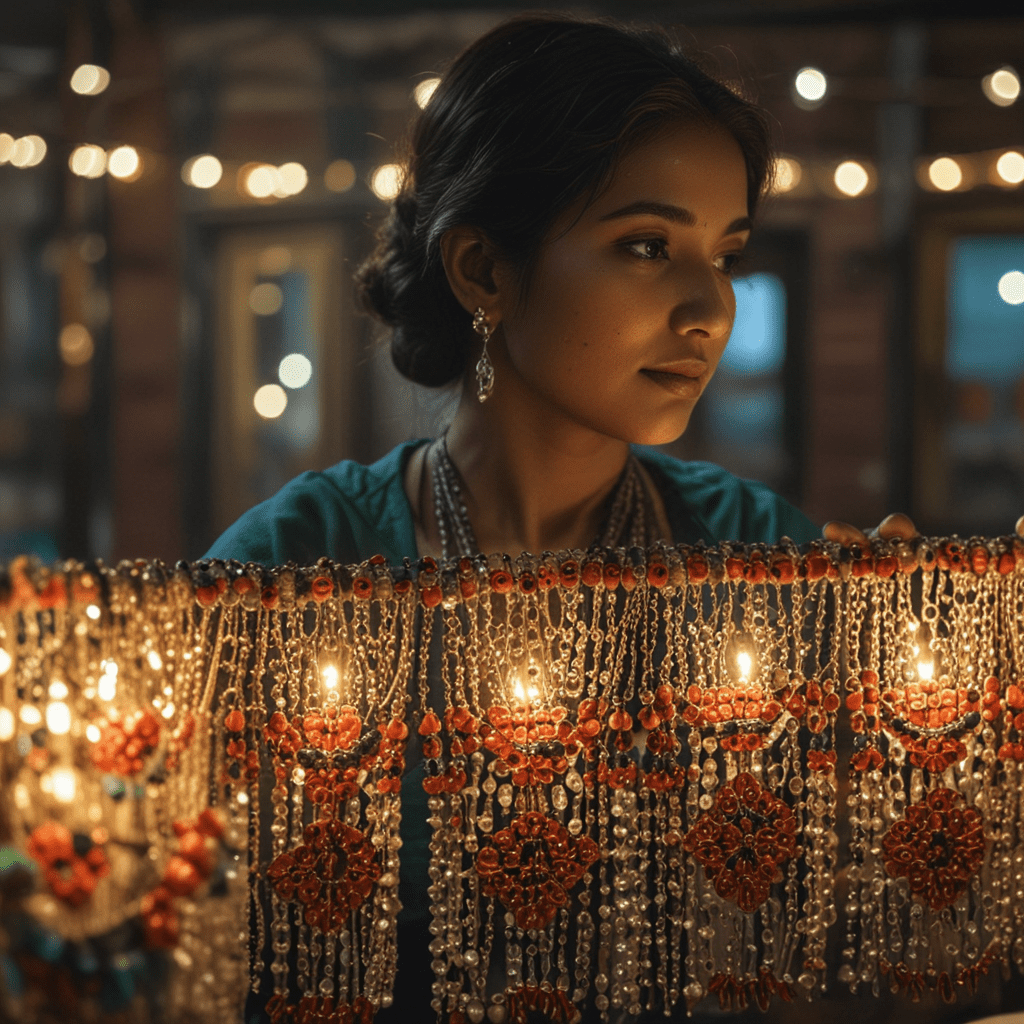
Traditional Beadwork in Bangladesh
Bangladesh is renowned for its vibrant and intricate beadwork, a traditional art form that has been passed down through generations. This exquisite craftsmanship has played a significant role in the country's cultural heritage and economic development.
Historical Background of Beadwork
Beadwork in Bangladesh traces its roots back to ancient times. Archaeological excavations have uncovered evidence of bead-making and beadwork from the Mauryan period (322-185 BCE). The art flourished during the Mughal era (1526-1857), with elaborate beadwork adorning royal garments and other objects.
Types and Materials Used in Beadwork
Traditional beadwork in Bangladesh utilizes a vast array of beads made from different materials, including glass, ceramic, metal, wood, and even precious stones. The most common type of bead is the glass bead, which comes in various sizes, shapes, and colors. Ceramic beads are also prevalent, known for their durability and glazed finishes.
Regional Variations and Styles
Beadwork in Bangladesh exhibits diverse regional variations, with distinct styles prevalent in different parts of the country. In the northern region, beadwork is characterized by intricate floral patterns and vibrant colors. In the southern region, beadwork incorporates geometric designs and earthy tones. The eastern region is known for its delicate and elegant beadwork, often featuring intricate lace-like patterns.
VI. Social and Cultural Significance
Traditional beadwork in Bangladesh holds immense social and cultural significance. It is an integral part of the country's cultural identity, reflecting the rich artistry and craftsmanship of its people. Beadwork is often used to adorn traditional costumes, such as the sari and salwar kameez, adding a touch of elegance and beauty to these garments. It is also used in ceremonial rituals, such as weddings and festivals, where it signifies auspiciousness and prosperity.
VII. Economic Impact of Beadwork Industry
The beadwork industry in Bangladesh plays a significant role in the country's economy. It provides employment to countless artisans, particularly women, who are skilled in the art of beadwork. The industry generates substantial income through the sale of beadwork products both within Bangladesh and to international markets. The export of beadwork items, such as jewelry, accessories, and home décor, contributes to Bangladesh's foreign exchange earnings.
VIII. Contemporary Innovations and Adaptations
While traditional beadwork techniques and designs remain highly valued, contemporary artisans are experimenting with innovative approaches to keep the art form relevant and appealing to modern tastes. They are incorporating new materials, such as acrylic beads and metal accents, into their designs. Artisans are also exploring contemporary design aesthetics, such as minimalist and geometric patterns, to create unique and stylish beadwork pieces.
IX. Challenges and Preservation Efforts
Despite its resilience, the traditional beadwork industry in Bangladesh faces challenges such as competition from mass-produced imitation products, the rising cost of raw materials, and the need for skilled artisans. To preserve this valuable art form, government initiatives and non-profit organizations are working to support beadwork artisans, promote their skills, and ensure the continuity of traditional techniques.
X. Conclusion and Future of Traditional Beadwork
Traditional beadwork in Bangladesh is a testament to the country's rich cultural heritage and artistic prowess. It continues to thrive, adapting to changing times while preserving its timeless beauty and significance. With ongoing efforts to support artisans and promote the art form, the future of traditional beadwork in Bangladesh looks bright, promising to captivate generations to come with its intricate designs and vibrant colors.
FAQ
What are the most common materials used in traditional beadwork in Bangladesh?
Traditional beadwork in Bangladesh utilizes a vast array of beads made from different materials, including glass, ceramic, metal, wood, and even precious stones.
What is the significance of beadwork in Bangladeshi culture?
Traditional beadwork in Bangladesh holds immense social and cultural significance. It is an integral part of the country's cultural identity, reflecting the rich artistry and craftsmanship of its people.
How does the beadwork industry contribute to the Bangladeshi economy?
The beadwork industry in Bangladesh plays a significant role in the country's economy. It provides employment to countless artisans, particularly women, who are skilled in the art of beadwork.
What are the challenges facing the traditional beadwork industry in Bangladesh?
The traditional beadwork industry in Bangladesh faces challenges such as competition from mass-produced imitation products, the rising cost of raw materials, and the need for skilled artisans.
What efforts are being made to preserve traditional beadwork in Bangladesh?
Government initiatives and non-profit organizations are working to support beadwork artisans, promote their skills, and ensure the continuity of traditional techniques.

